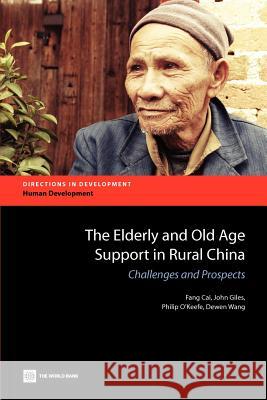The Elderly and Old Age Support in Rural China » książka
The Elderly and Old Age Support in Rural China
ISBN-13: 9780821386859 / Angielski / Miękka / 2012 / 166 str.
This volume first examines projected demographic changes that will affect the economic well-being of China's rural elderly over the next twenty years, taking into account both China's sharp demographic transition and the continued migration of young adults into cities. The projected old age dependency ratio of 34 percent in China's rural areas by 2030 suggests that support of the elderly is likely to be an increasing burden on China's families over the next twenty years. The book next documents the sources of financial support, poverty incidence and vulnerability of the rural elderly since the early 1990s. China's rural elderly have been consistently poorer and more vulnerable to poverty than both working age households and the urban elderly. In contrast to the urban elderly who frequently have pension support, the rural elderly typically rely either on their own labor income or financial support from adult children. A substantial share of China's rural elderly continue to work well beyond the age 70, but labor as a primary source of support falls sharply during their 60s. Additional evidence suggests that the rural elderly work well beyond 60 out of necessity and only stop working when physically incapacitated. While average transfers from adult children to elderly parents are sufficient to keep them out of poverty, adult migrant children with uncertain income create the risk that transfers will not be sufficient to keep some rural elderly out of poverty. The final sections of the book review experiences with rural pensions during the 1990s and 2000s and draws out the lessons which have informed the design of a new national rural pension scheme. Among the many issues discussed, the report highlights the importance of providing incentives for participation in the pension scheme and important issues related to the portability of pensions for a mobile population.











